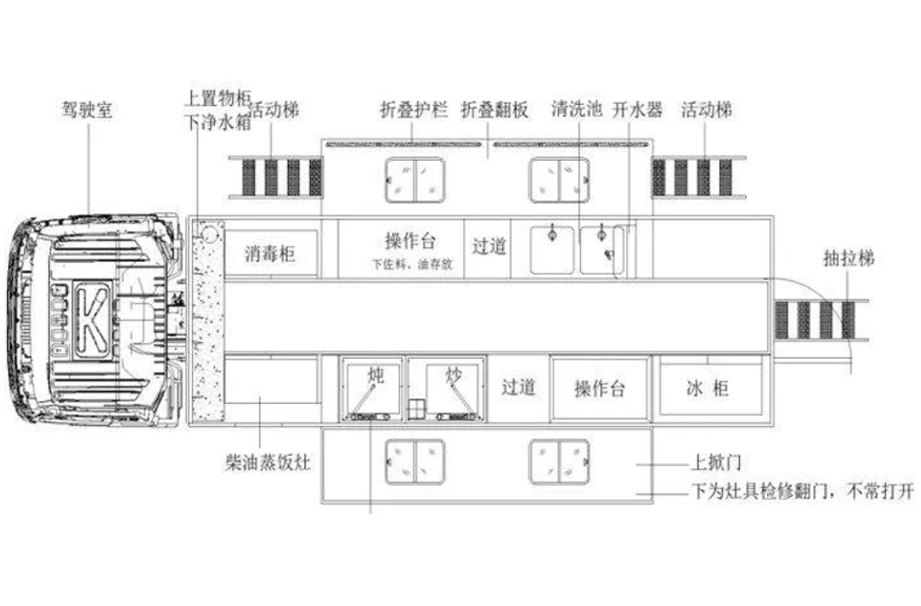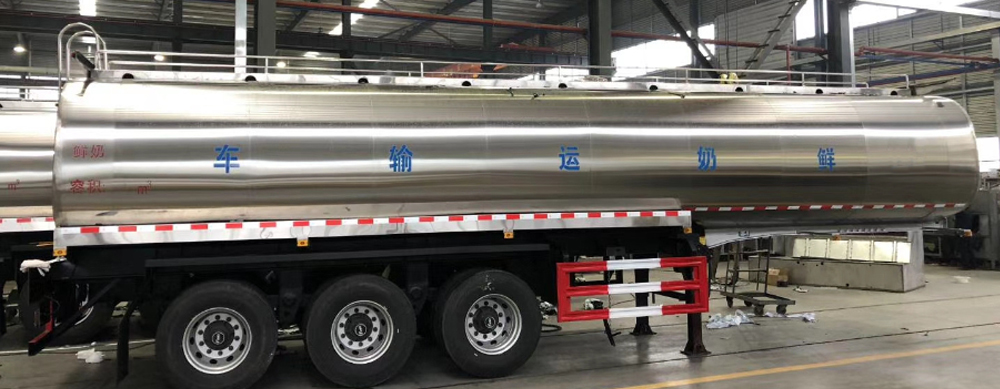A Mobile Food Truck is a vibrant and innovative addition to the culinary scene. This compact yet fully-equipped vehicle is designed to bring delicious eats directly to the streets.It features a bright, eye-catching exterior, often painted with unique logos and colorful designs that attract hungry passersby.
Inside, it houses a professional-grade kitchenette. There's a propane-powered stove for frying, grilling, and sautéing, along with a built-in oven for baking. A spacious refrigerated compartment keeps fresh ingredients chilled and ready for use. Ample storage cabinets store cooking utensils, plates, and napkins. The serving window, with its retractable awning, offers a convenient point of interaction between the friendly staff and customers.
| Item | MOBILE FOOD TRUCK |
| Condition | New |
| Drive model | 4x2, new condition, LHD |
| Applicable Industries | Hotels, Food & Beverage Factory, Restaurant, Home Use, Retail, Food Shop, Food & Beverage Shops |
| After Warranty Service | Video technical support, Online support, Spare parts, Field maintenance and repair service |
| Voltage | 110V/220V/380V |
| Power | 1.5-30kw |
| Gear Box | 5 Forward Gear, 1 Backward Gear |
| Tire | 7.00R20 6 pieces with 1 spare tire |
| Warranty | Field installation, commissioning and training |
| Application fields | Commercial catering, Dairy products factory, Snack food factory |
| Machinery Capacity | 1-3 Persons |
| Machinery Function | Multifunction |
| Output product name | Fast Food |
| Key Selling Points | Long Service Life |
| Machinery Test Report | Provided |
| Video outgoing-inspection | Provided |
| Core Components | Motor, Pressure vessel, Pump, Gear, Bearing, Gearbox, Engine |
| Function | Vending Snack |
| Usage | Outdoor Street Vending |
| Keywords | Customized Food Snack Truck Easy to Operate |
| Wall Materials | Option 1 (cheaper): Color steel + insulation foam; Option 2 (more expensive): Outside galvanized steel + insulation Foam + Inside aluminum composite panel, Two ends: fiberglass |
| Floor | Non-slip aluminum checkered plate |
| Cooking Equipment | Can be customized, such as fridge, freezer, fryer, griddle, hot dog, pop corn, Exhuast hood etc. |
| Wheels | 4 Road Wheels |
| MOQ | 1unit |
| Standard Configuration | Both sides turn up with bar ,rear turn up, the truck is equipped with power amplifier horn and external power plug, non-skid aluminum decorative pattern bottom plate, lighting can be optional to install ceiling lamp or layout LED light strip. |
| Remark | 1. Three sides of the van can be spread out, one side can be turned out with bar counters. 2. Power supply in the van. 3. With storage rack, washing-up sink, gas stove, etc. 4. Refrigerator,air conditioner, generator, Fish pallet, ice cream machine, fried ice machine, cooker, stainless steel table, cabinet etc. are optional. |

The frame of a is typically made of sturdy steel or aluminum alloy, providing a solid base to support the entire structure. It is designed to withstand the rigors of travel and the weight of the kitchen equipment.
The chassis includes axles, wheels, and a suspension system. The axles ensure proper weight distribution and stability while the wheels, often with durable tires, enable smooth movement. The suspension helps absorb shocks and vibrations, enhancing the ride quality and protecting the onboard appliances.
The body of the truck is constructed with insulated panels to maintain proper temperature inside, whether it's for keeping food hot or cold. The kitchen area is outfitted with a range of components. There's a cooking range or grill, which may run on propane or electricity. A sink with a water supply and drainage system is necessary for food preparation and cleaning. Refrigerators and freezers are installed to store perishable ingredients. Storage cabinets and shelves are provided to keep utensils, spices, and other supplies organized.

1. Size and Layout
Space requirements: Determine the amount of space you need based on the type of cuisine you plan to serve.
Exterior dimensions: Make sure the truck's overall size fits in the locations where you plan to operate.
2. Kitchen Equipment
Cooking appliances: The quality and type of cooking equipment are vital. If you're into burgers and fries, a high-quality flat-top grill and deep-fryer are essential.
Refrigeration: Adequate refrigeration is crucial to keep ingredients fresh. Consider the size and capacity of the refrigerator and freezer units.
3. Power Source
Generator or electrical hookup: Decide whether you want a truck with an onboard generator or one that can rely on external electrical hookups.
4. Plumbing System
Water supply and drainage: A reliable water supply and efficient drainage system are necessary for food preparation and cleaning. Check the capacity of the water tank and the functionality of the sink and drain.
5. Build Quality and Insulation
Body material: Look for a truck with a durable body made of materials that can withstand the elements and regular use.
Insulation: Proper insulation is important to maintain the temperature inside the truck. It helps keep the cold food cold and the hot food hot, and also provides a more comfortable working environment for you and your staff.

Mobile food trucks are designed to be highly mobile. They are mounted on a vehicle chassis, usually a truck or a van, which allows them to travel to different locations with ease. This mobility enables food truck owners to reach a wide range of customers.
Despite their limited space, mobile food trucks have a well-equipped and efficient kitchen. They typically feature a cooking area with a stove, grill, or deep - fryer, depending on the menu.
Mobile food trucks offer a great deal of flexibility when it comes to menus. Owners can focus on a specific cuisine or offer a diverse range of items.
The exterior of a mobile food truck provides an excellent canvas for branding. With eye-catching designs, logos, and colors, food trucks can attract customers from a distance.
Mobile food trucks have a direct and personal connection with customers. The serving window serves as a point of interaction where customers can place their orders, watch the food being prepared, and chat with the staff.
Compared to traditional brick-and-mortar restaurants, mobile food trucks generally have lower startup costs. There's no need to invest in a large building or extensive interior renovations. The initial investment is mainly in the truck, kitchen equipment, and permits.

